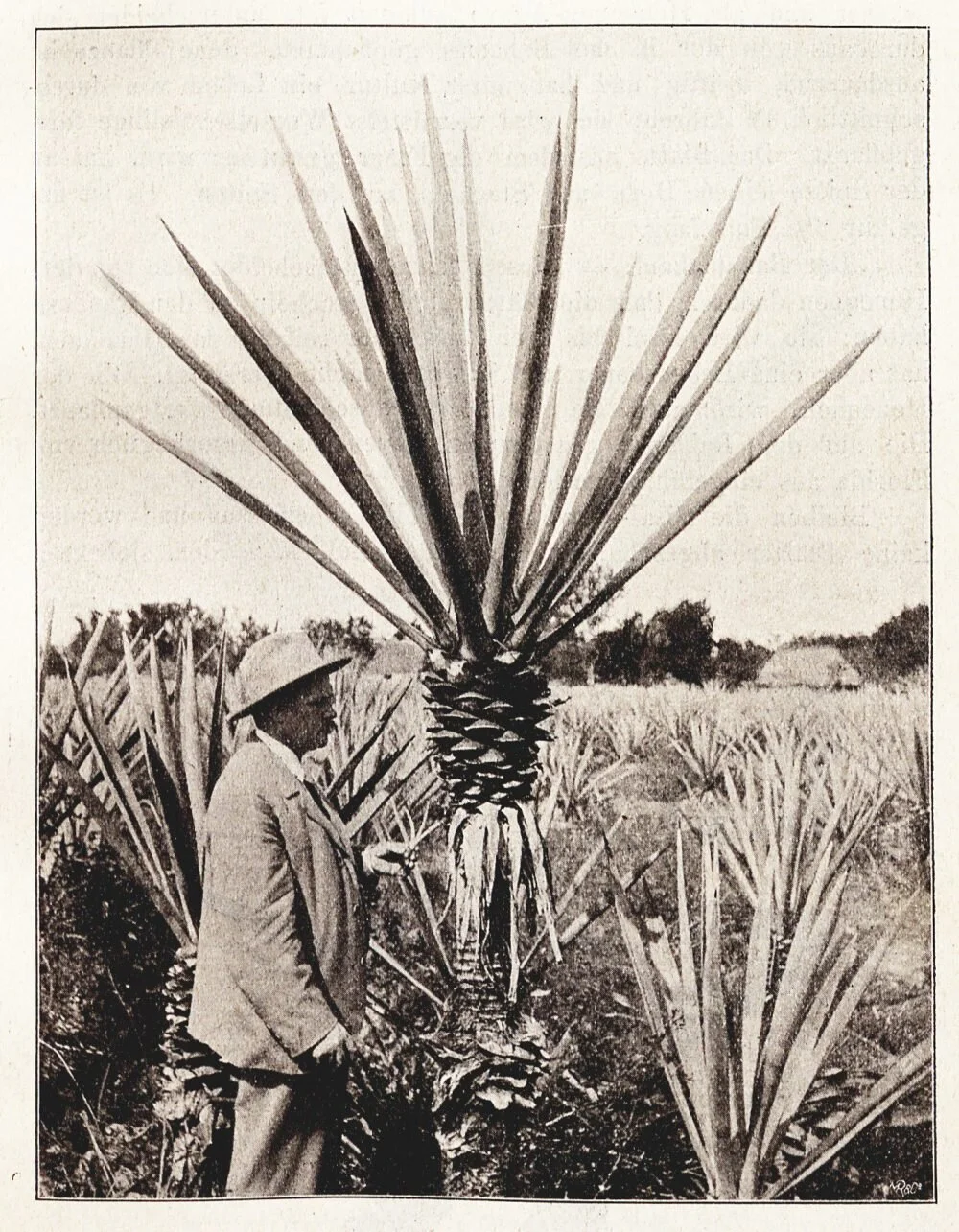All About Agave
Agave Vs. Tequila
Have you ever wondered why you've never been able to find American Tequila? If you've ever wandered the liquor store aisles searching for a 'Made in America' sticker on your favorite tequila bottle and came up empty, there's an explanation. To be legally recognized as Tequila, a spirit must be made from 100% Blue Weber Agave and produced in Jalisco, Mexico, and municipalities in Guanajuato, Michoacán Nayarit and Tamaulipas. Any spirit made with Blue Weber Agave outside these areas, or from agave that is not Blue Agave, is not and cannot be Tequila and is instead referred to simply as 'American agave' or 'agave derived spirit.'
The Agave Plant
While it may look like a cactus, the agave plant is a succulent and member of the lily family. At full maturation, the agave plant can reach fifteen feet in height and must be cut by hand and trimmed to reveal the heart or piña, which will then be baked and juiced when it reaches the distillery.
Agave Vs. Blue Agave
Agave, also known as agave syrup, is a natural sweetener found in various species, including Agave Salmiana, Green, Grey, Thorny and Rainbow varieties. In comparison, blue agave nectars are exclusively derived from species-specific from Central Mexico's renowned blue agave plant and are the primary ingredient in Tequila.
American Agave
With the popularity of agave spirits booming in the United States and Tequila having geographic limitations on its production, many distillers have taken it upon themselves to craft American-made renditions of the delicious spirit. Thus, American agave spirits were created.
However, the difference between the two types of agave-made spirits isn't just from the plant itself, but also the crafting process. An American agave distiller can show consumers their distillation process, and batch-produce a quality product in ways that a small-batch tequila distiller in Mexico cannot. Other factors that come into play in American agave spirits are whether or not the plant was directly used in the process. A spirit crafted with blue agave will result in an earthy, peppery and smoky flavor in the best Tequila from Mexico, presenting a unique challenge to distillers seeking a Tequila-type beverage without leaving the states.
Distillation Process
Baking
Once the agave hearts are harvested and transported back to their distillery, they begin their transformation. The first step in the process is to bake the agave using one of two ovens: clay/brick or stainless steel. After two to three days of steam cooking, the baking process is complete, and the agave piñas are reduced to a fraction of their original size. After baking, the piñas will become dark brown in appearance and resemble a caramelized honeycomb.
Extraction
After baking is complete, the plant's sweet juices must be extracted using mechanical shredders that help separate the agave fibers and collect the juice for fermentation. The agave shredders are reminiscent of those used to mill sugar cane for the production of rum.
Fermentation
Just like any other distilled spirit, the process of fermentation is vital to the final product. During this process, the collected agave nectar is added to fermentation tanks with water and yeast to convert the sugar into alcohol. The complete fermentation process typically takes two to five days and requires either wood or stainless-steel fermentation tanks and a strict ratio of water to sugar.
Distilling
Once fermentation is complete, the fermented mosto (or wash) is typically 4-10% alcohol, and the goal is to distill it to a concentration of 55%. To do so, the mosto is added to the vessels and boiled before the alcohol vapor is captured by the condenser and collected. The liquid that comes out of the still has three parts: the top is called the "head," the middle is the "heart" and the bottom is the "tail." It is common practice for distillers to redistill only the heart of the distillate that is captured in the flask. Most distillers throw away the heads and tails because these hold the majority of the impurities. Thus, the heart has the best liquor. After the final distillation, the head and tail are removed, and the heart is sent on to barreling or bottling.
Agave Flavor Profiles
Commonly known for its earthy, semi-sweet flavor that is distinctly agave. This spirit's flavor profile will change depending on where the agave was grown and how long it was aged.
Blanco or Silver: Aged between 0-59 days with agave-forward flavors and notes of pepper and citrus with a spicy finish.
Joven or Gold: A mixture of gold and silver with sweet notes of vanilla and spiced undertones.
Reposado or Rested: Aged between 2-12 months in oak barrels with a smooth flavor and oak, vanilla and caramel notes.
Añejo or Aged: Aged between 1-3 years with a smokey flavor profile and tobacco leaves and butterscotch notes.
Extra Añejo or Extra Aged: Aged 3+ years with a smooth taste and sweet notes of vanilla and coconut.
Northside American Agave
Northside's American Agave is crafted with 100% organic agave imported from Jalisco, Mexico. Aged in whiskey barrels for an ultra-smooth taste, our American Agave is perfect for all the classics like a Margarita, Paloma or Rosita.
Northside Barnwater
Ingredients:
1.5 oz Northside American Agave
5 oz Topo Chico
Garnish: Lime Wedge and Jalapeño Slices
Instructions: Add Northside American Agave and Topo Chico into a shaker with crushed ice and shake. Pour into a double rocks glass. Garnish with a lime wedge and jalapeño slices. Enjoy!



